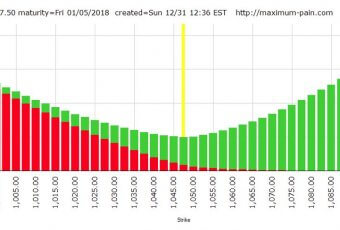A synthetic short is a bearish options trading strategy that is designed to mirror short selling a stock. Just like with shorting stocks, this strategy is employed when you believe that a stock price is going to fall, and you want to make a profit on the way down.
If there’s a company that you believe will miss on earnings expectations, will fail to earn a big contract, a buy out offer will fall through, or it’s already trending down, this is a great strategy to use. Once you’ve isolated on a stock that you believe will go down in a set period of time, the mechanics of the trade are easy.
How do you create a synthetic short?
There’s nothing fancy here. Placing two options trades at the same time creates a synthetic short. You buy at-the-money puts on your chosen target. At the same time, you sell an equal amount of at-the-money call contracts. Both the puts and the calls should have the same expiration date.
For example, if company XYZ is currently trading in the market at $55 per share and you believe that within the next two months, the stock price will fall, you buy 1 put contract with a $55 strike price that expires 3 months from now. You also sell 1 call contract with a strike price of $55 and the same expiration date. For this example, let’s say you pay $3.50 for the put contract and receive $3.00 for the call contract.
The cost of the trade will depend upon the premiums of the two options. If the calls are worth more than the puts, you will actually create a credit in your account. In other words, not only didn’t you pay anything to initiate the trade, you actually took in some money. In our example, the put is worth more, so the cost of initiating the trade is the difference between the amount paid for the put and the amount received for the call, which in this case is $50.
How do you make money?
If your analysis is correct and the stock falls in value, the profit on your puts will go up as the stock drops, and the calls you sold will become worthless, so you get to keep that premium. Using our example above, if the stock fell to $45 at expiration, you would make $10 dollars per share, less the amount you paid for the put, plus the amount you received for the call. So, at expiration, your profit before commissions would have been $950.
If the company were to implode during this three-month period and become worthless, you would achieve the maximum possible profit on this trade, which is $5,450. Not too bad for a trade that only cost you $50 to initiate!
What’s the downside?
The downside is that if your analysis was incorrect and the stock goes up, your loss is theoretically unlimited…since there is theoretically no limit to how high a stock can rise. Staying with our example, if the stock price is $65 at expiration, the put you bought expired worthless, and the call you shorted are now $10 per share in the hole. In this case, you lost $350 on the put, you lost $1,000 on the call, but you received $300 when you sold the call, so your loss before commissions was $1,050. If the stock went much higher, your losses would continue to grow as the stock went up.
Why would you create a synthetic short?
When we discuss a synthetic short position, the first question people ask is, “Why don’t you just short the stock?” That’s a great question. Why would we use a more complicated options trading strategy to do the same thing that you could do with a relatively simple stock strategy?
There are several reasons to use this strategy instead of a traditional short sell, but the main reason is it’s a great way to short a stock that is hard to borrow. When you short a stock, your broker must borrow shares from somebody who owns them, so you can short them. If a stock has already been heavily shorted, it is hard to impossible to borrow shares. With a synthetic short, there is no need to borrow shares.
Obviously, there are nuances to this trade not mentioned in this article, such as the ability to sell out of or buy back into your options. Plus, you can also leg out of you trades to capture some remaining value. Much like short selling, synthetic shorts aren’t something a novice trader should be involved with. However, if you are an experienced trader who likes to take short positions, this is a strategy that can come in handy.



